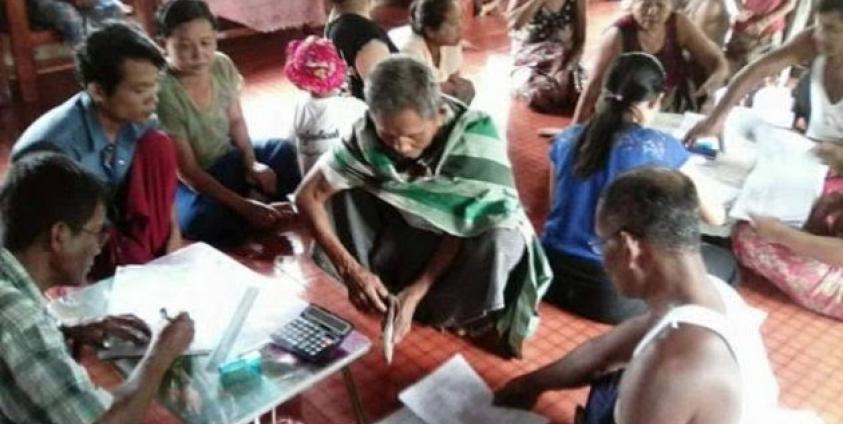The delay in the National Electrification Project (NEP) has caused villagers to doubt it will become a reality, but they are worried that the second installment they paid for is now lost.
The National Electrification Project is a joint venture by the World Bank and the Department of Rural Development that was supposed to deliver electricity to villages by late May. Villagers in Kyain Seikgyi Township, Karen State have previously not had access to electricity.
Villagers were informed that solar panels would be provided under the National Electrification Project, but villagers say nothing has happened and that they are still waiting.
More than 1,800 households, from 29 villages have already paid two installments to the Myanmar Economic Bank for the solar panels that were promised to be operational by May, but it is now August and they are still without the promised solar panels.
Nan Anine Pawt, a villager from Khalae Dagundaing village said; “We were told the solar panels installment would be finished by May, but it is already August. We’ve already paid two installments. We have been waiting a long time. We don’t know what’s happening? We are worried we’ve been cheated?”
Mann Khin Hlaing, governor of Tamout Wong village said; “People paid their installments twice. They have not seen the solar panels yet. Villagers are asking if they have been cheated. We are worried about this misunderstanding and have told them to be patient.”
Kyain Seikgyi Township officials said that in the past the solar panels were provided by internal companies, but with this project, since it involves the World Bank, more accredited foreign companies are involved in the tender.
Solar panels with a five-year warranty have been ordered from over 60 companies, including companies from Taiwan, Korea, Japan and Germany and officials say that this has contributed to the delays.
Saw Aung Myo Myint, the department head of the Township Rural Development Department spoke to Karen News about the delays.
“We work cooperatively with the World Bank on this project. Over 60 companies are involved. We have been examining the companies. We are trying to provide people with quality solar panels. Solar panels will be set up by December this year.”
The solar panels have been divided into three prices – 300,000 kyat, 480,000 kyat and 520,000 kyat. Villagers have to pay 30% to 40% of these costs depending on the type they get.
Villagers who get solar panels that cost 300,000 kyats will have to pay three installments of 30,000 kyats, panels that cost 480,000 kyats, villagers will have to pay three installments of 50,000 kyats and panels that cost 520,000 kyats, villagers will have to pay three installments of 70,000 kyats to the Myanmar Economic Bank.
The National Electrification Project was implemented in 2014 with help from the World Bank. It was implemented with the aim to supply villages within a five-mile radius of the Myanmar Mega Cableline with solar electricity. The World Bank has committed to provide USD $400 million of the total USD $567 million needed for the project.








